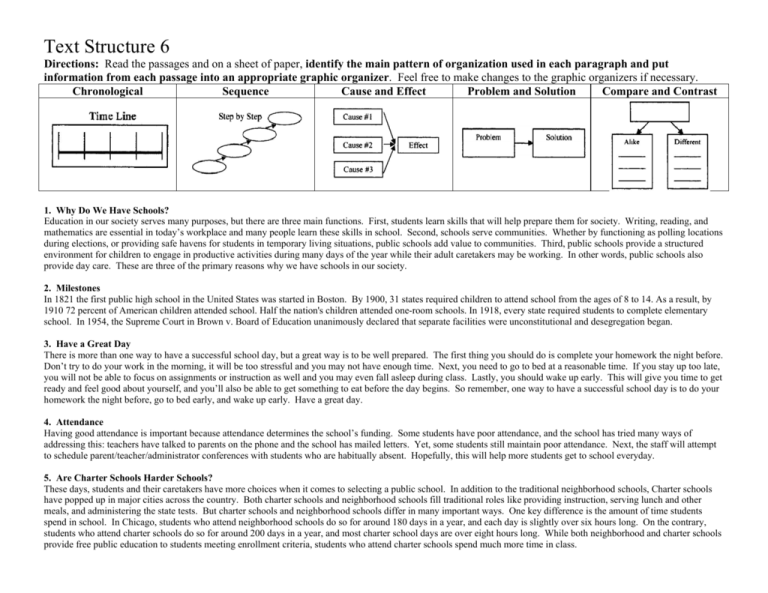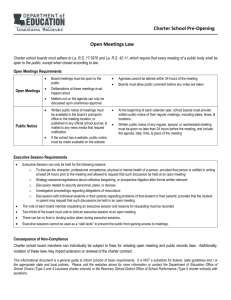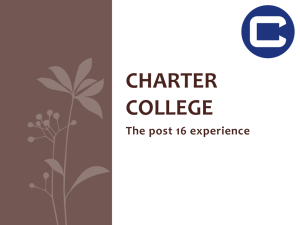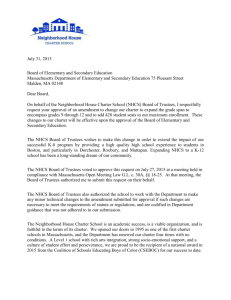Text Structure Worksheet: Reading Comprehension
advertisement

Text Structure 6 Directions: Read the passages and on a sheet of paper, identify the main pattern of organization used in each paragraph and put information from each passage into an appropriate graphic organizer. Feel free to make changes to the graphic organizers if necessary. Chronological Sequence Cause and Effect Problem and Solution Compare and Contrast 1. Why Do We Have Schools? Education in our society serves many purposes, but there are three main functions. First, students learn skills that will help prepare them for society. Writing, reading, and mathematics are essential in today’s workplace and many people learn these skills in school. Second, schools serve communities. Whether by functioning as polling locations during elections, or providing safe havens for students in temporary living situations, public schools add value to communities. Third, public schools provide a structured environment for children to engage in productive activities during many days of the year while their adult caretakers may be working. In other words, public schools also provide day care. These are three of the primary reasons why we have schools in our society. 2. Milestones In 1821 the first public high school in the United States was started in Boston. By 1900, 31 states required children to attend school from the ages of 8 to 14. As a result, by 1910 72 percent of American children attended school. Half the nation's children attended one-room schools. In 1918, every state required students to complete elementary school. In 1954, the Supreme Court in Brown v. Board of Education unanimously declared that separate facilities were unconstitutional and desegregation began. 3. Have a Great Day There is more than one way to have a successful school day, but a great way is to be well prepared. The first thing you should do is complete your homework the night before. Don’t try to do your work in the morning, it will be too stressful and you may not have enough time. Next, you need to go to bed at a reasonable time. If you stay up too late, you will not be able to focus on assignments or instruction as well and you may even fall asleep during class. Lastly, you should wake up early. This will give you time to get ready and feel good about yourself, and you’ll also be able to get something to eat before the day begins. So remember, one way to have a successful school day is to do your homework the night before, go to bed early, and wake up early. Have a great day. 4. Attendance Having good attendance is important because attendance determines the school’s funding. Some students have poor attendance, and the school has tried many ways of addressing this: teachers have talked to parents on the phone and the school has mailed letters. Yet, some students still maintain poor attendance. Next, the staff will attempt to schedule parent/teacher/administrator conferences with students who are habitually absent. Hopefully, this will help more students get to school everyday. 5. Are Charter Schools Harder Schools? These days, students and their caretakers have more choices when it comes to selecting a public school. In addition to the traditional neighborhood schools, Charter schools have popped up in major cities across the country. Both charter schools and neighborhood schools fill traditional roles like providing instruction, serving lunch and other meals, and administering the state tests. But charter schools and neighborhood schools differ in many important ways. One key difference is the amount of time students spend in school. In Chicago, students who attend neighborhood schools do so for around 180 days in a year, and each day is slightly over six hours long. On the contrary, students who attend charter schools do so for around 200 days in a year, and most charter school days are over eight hours long. While both neighborhood and charter schools provide free public education to students meeting enrollment criteria, students who attend charter schools spend much more time in class.







